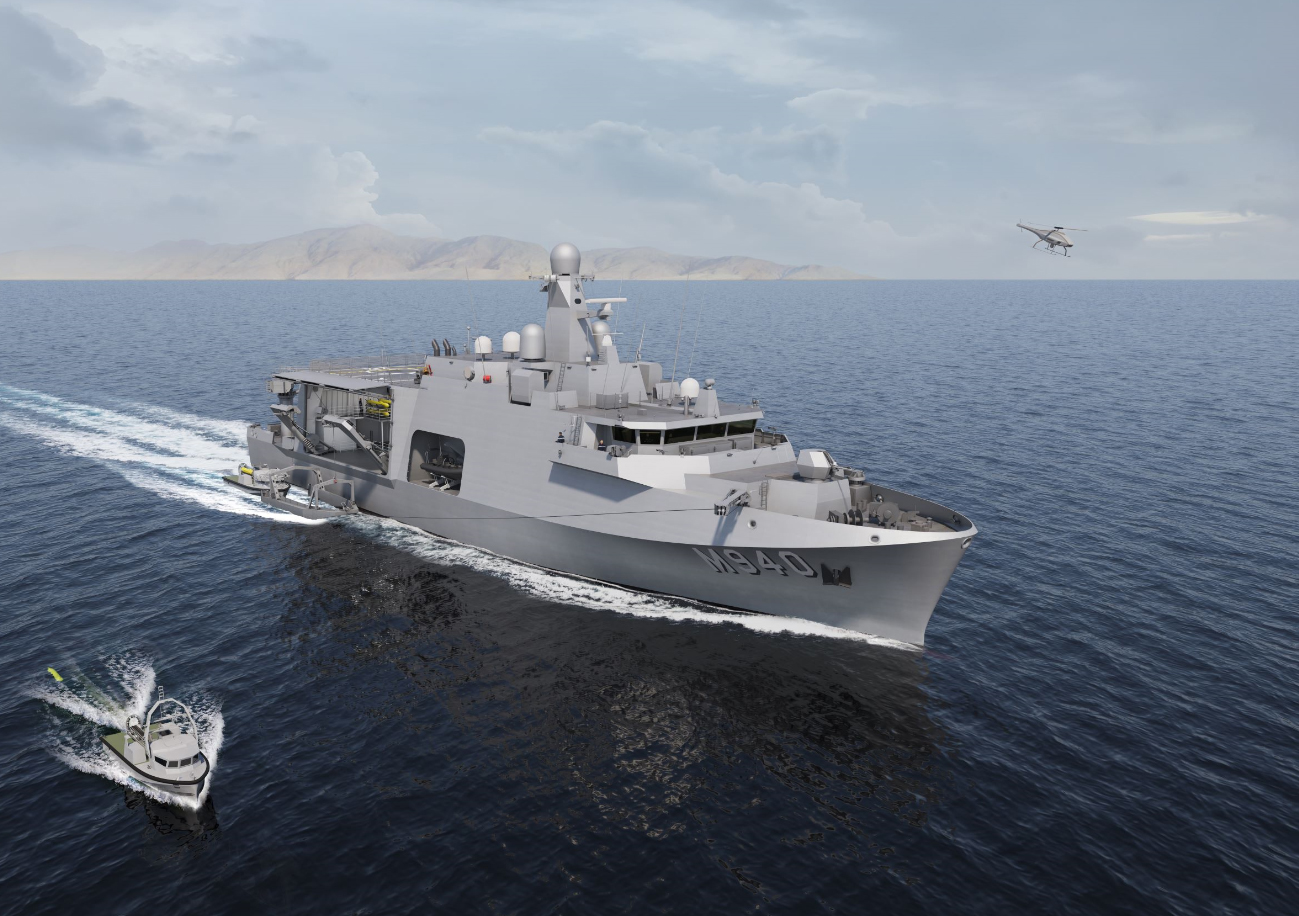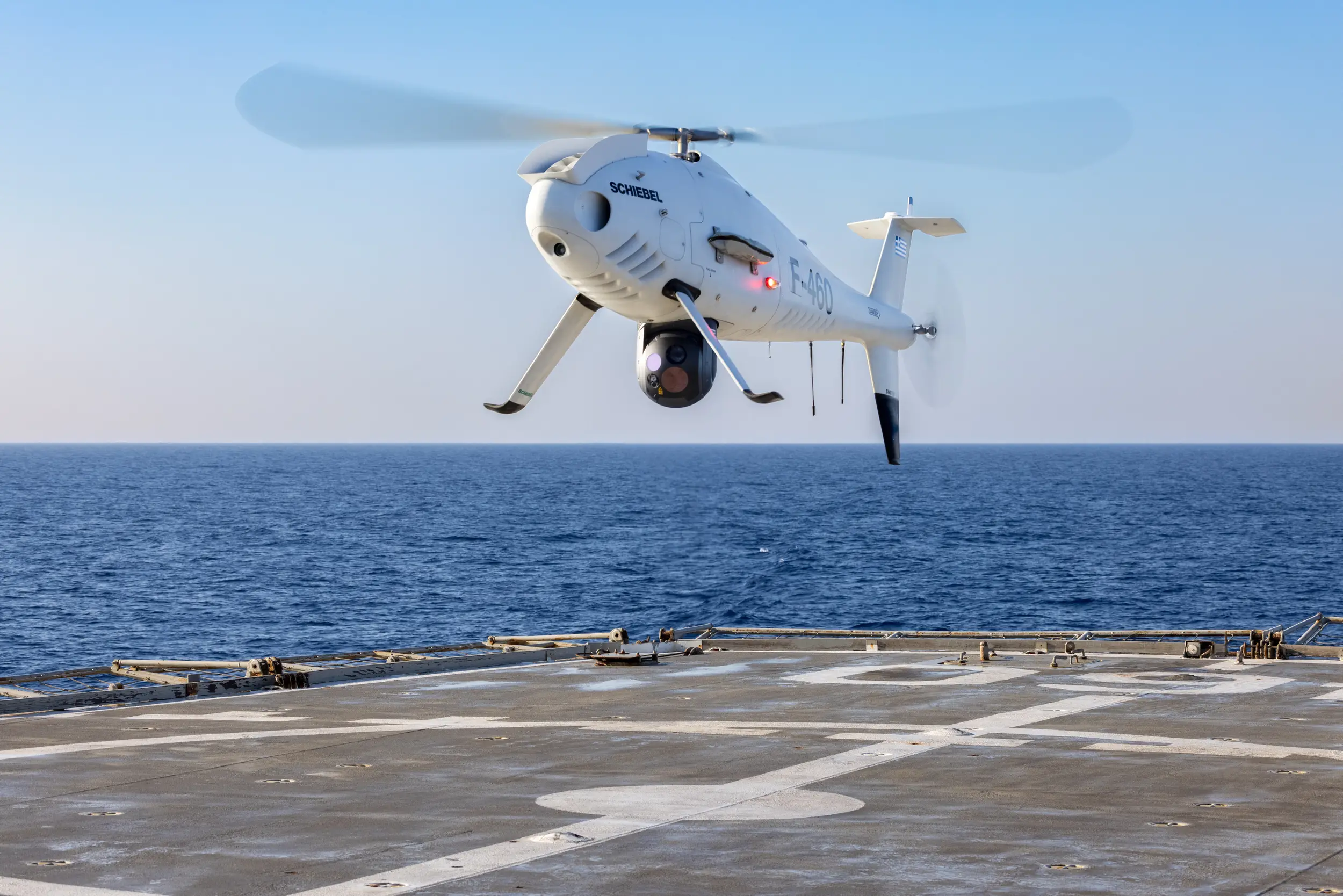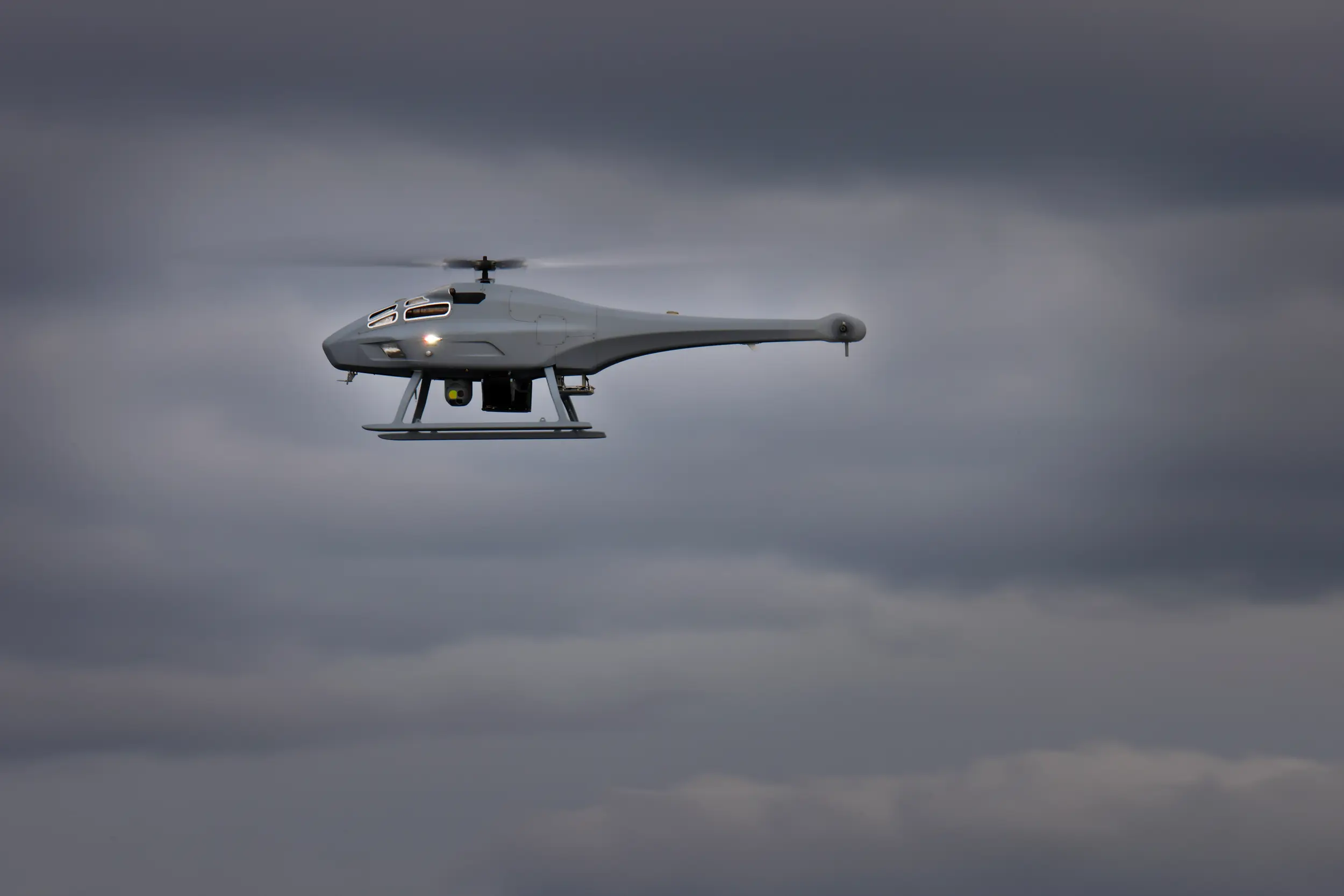
REPORT HOME > Drone carriers
April 2024 | technology report | UAS
With many navies actively planning to acquire or modify vessels that will act primarily as motherships for a complement of uncrewed systems, Shephard dives into the capabilities and mission sets for these specialist craft, and what role they will play in the wider naval force.
Above: Naval Group’s rMCM ship design incorporates a mission bay that includes handling, launch and recovery systems for all the drones in the programme’s ‘toolbox’. (Image: Naval Group)
As UAVs and other uncrewed systems play a growing role in maritime operations, so navies must acquire or adapt vessels to host these platforms, serving as motherships. This presents demands and opportunities for communications, multi-domain operations and beyond.
There are now a range of programmes and industry offerings that place uncrewed vehicles of different types at the centre of their design. These include Damen’s Multi-Purpose Support Ship (MPSS), which is pitched as ‘an answer to increased use of drone technology at sea’.
Likewise, the USMC has said it will develop a ‘holistic mothership experimentation campaign plan that addresses surface, subsurface, airborne and manned/unmanned teaming systems designed to accelerate modernisation’.
Why specialise?
Whether a dedicated vessel or an adapted variant, it is important to have a mothership for several reasons, said Sidharth Kaushal, research fellow, sea power – military sciences at the Royal United Services Institute (RUSI).
First, the range of most uncrewed systems is relatively limited. Second, even when that endurance is more substantial, there is still a need to meet engineering requirements in the case of breakdowns, ‘just by the nature of maritime activity’.
Such ships face several demands, Kaushal added. One obvious aspect is the ability to physically accommodate the systems. However, they should also be capable of integrating data from the UAV or similar into the ship’s combat information centre. Finally, there would likely be a need for ‘some capacity to perform at least first-line repairs on systems – and that’s a question of space, but also personnel’.
Neil Hunter, global head of sales at Schiebel, said that motherships should be able to house a variety of uncrewed assets, including UAVs, USVs and UUVs. A VTOL aircraft like the company’s Camcopter S-100 has a minimal footprint, he argued, ‘both for storage as well as not needing a runway or launch equipment’.
From an operational perspective, Hunter said a UAV of this type can be incorporated next to conventional assets when needed. A small field maintenance team can keep the ship’s overall crewing requirement to a minimum, while ‘compliance with recognised standards such as STANAGs allows interoperability where required’.
Schiebel is currently developing a larger version of the Camcopter, the S-300, which will be able to carry heavier payloads and has a longer endurance (up to 24 hours), both elements that will need to be factored into mothership requirements.
Another important consideration is the ability of UAS to work together or with other assets when being deployed from the mothership (or another naval vessel). Pointing to concrete examples, Hunter said the S-100 conducts maritime ISR, enabling general situational awareness with a radar or EO/IR camera, while the S-300 could deploy multiple sonobuoys for submarine detection.
Another example is the ability of the S-100 to search and detect distressed persons at sea, while the S-300 could then drop off rescue equipment, such as a lifeboat.
‘Unmanned-unmanned teaming (UUT) is on the rise, with USVs and UUVs being dropped off by unmanned airborne assets, such as the S-100 or S-300, where the UAV then acts as a data relay from the USV/UUV,’ communicating with a combat management system on the mothership or another vessel, Hunter added.
Above: A VTOL design like the Camcopter S-100 can be embarked alongside crewed assets when needed, but is also adaptable for teaming with other UxVs. (Photo: Schiebel)
Carrier concepts
Whatever their size, motherships must be viewed as ‘drone carriers’, a spokesperson for Naval Group told Shephard. ‘It means they are forward bases able to support drones and their operations, just like aircraft carriers are supporting [crewed] aircraft and aircraft operations.’
Such vessels are increasingly important because they boost fleet capabilities and remove personnel from dangerous areas, said the spokesperson. In addition, uncrewed systems provide endurance at sea and increase efficiency by cutting out transit times from port, as well as offering advantages in acting as a communications relay both to shore and local task groups.
This has been a focus for Naval Group for about 15 years, the spokesperson said, including as part of research for France’s Direction Générale de l’Armement (DGA) agency and the French Navy to remove technological barriers to the integration of UAVs.
In particular, the company is now focused on the work it is conducting for the Belgian and Dutch navies in their Replacement Mine Countermeasures (rMCM) programme. This sees Naval Group partner with Exail to develop a modular package incorporating different types of remotely operated vehicles and uncrewed systems, including UAS.
For this programme, Naval Group has developed a mission bay that includes handling equipment (such as elevators) and launch and recovery systems for all the drones in the ‘toolbox’ approach. This could also be adopted elsewhere in future, they said.
Integration is supported by a range of onboard technologies. For example, automation is important for remote control and data processing, as well as maintaining the link with the CMS. Last but not least, the mothership must provide a safe base for its uncrewed systems:
‘This means the ability to operate under threats and in rough seas,’ said the Naval Group spokesperson. ‘Therefore, they need features of normal combat vessels: reduced signatures, such as radar cross-section, self-protection (radar, remote-controlled artillery) as well as encrypted tactical data links and communications.’
Integration with the wider naval force is also a core consideration. ‘They have to share intelligence, situational awareness, tactical manoeuvres, alerts and mutual protection etc. This is why a real CMS has to be on board, in addition to the systems dedicated to the UAS.’
Plug and play
UMS Skeldar’s V-200 uncrewed VTOL system has been selected for integration into the Dutch-Belgian rMCM package.
Richard Hjelmberg, the company’s VP of business development, told Shephard there are three main ways of incorporating mothership capabilities into naval operations, all of which are likely to further develop in the coming years.
First there is the potential to use a purpose-built ship, the approach being taken for the rMCM toolbox. Next is equipping existing ships with the capability, aiming to ‘extend the coverage when compared to the ship’s radars or other systems in surveillance operations’.
Lastly, there is also potential to adopt a ‘pod’ approach, where the assets needed for a particular mission can be transported in a container that is stored in the ship when necessary, for example deploying assets for an anti-submarine warfare mission.
Above: Space is always at a premium aboard naval vessels, so one advantage of the mothership concept is that a large number of UAS such as UMS Skeldar’s V-200 can be carried in a smaller hull size. (Photo: UMS Skeldar)
Hjelmberg noted that the nature of uncrewed systems ‘provides a lot of bang for the buck’ when it comes to mothership design and adaptation. A conventional helicopter will naturally be larger, also requiring a crew of perhaps 15 personnel onboard to deploy, maintain and support the aircraft.
In the purest form of a system like the V-200, ‘you need two pilots and one technician – this means you have 12 bunks that you can use for other people or other capabilities’, said Hjelmberg. This means that smaller ships could be utilised with similar effectiveness as larger craft in some areas, or a larger ship could have additional capability.
‘On a ship it’s always a matter of if you have enough space; it’s always a challenge,’ added Hjelmberg. ‘If you ask the commander they always say they lack space – that’s where it makes the difference.’
Specific benefits will depend on the nature of the mission, he added. For example, a platform like the V-200 cannot perform operations such as personnel recovery in a search and rescue role, but it can provide similar endurance in surveillance operations to a crewed helicopter.
Looking to the future, the Naval Group spokesperson said that the company’s ‘MCM lab’ in Brussels is gathering experts from navies, industry and universities to conduct R&D in any field that can improve MCM efficiency. This includes at-sea cybersecurity, artificial intelligence (AI) and other areas.
Autonomy will likely play a growing role aboard both motherships and uncrewed systems more widely, but the person must always remain in the loop, the Naval Group spokesperson said.
‘We are working both on AI to provide decision aids to the crew and on unmanned vehicles to protect the crews, in missions such as mine warfare, for instance,’ they said. ‘But a crew will always be needed to take the final decision.’


